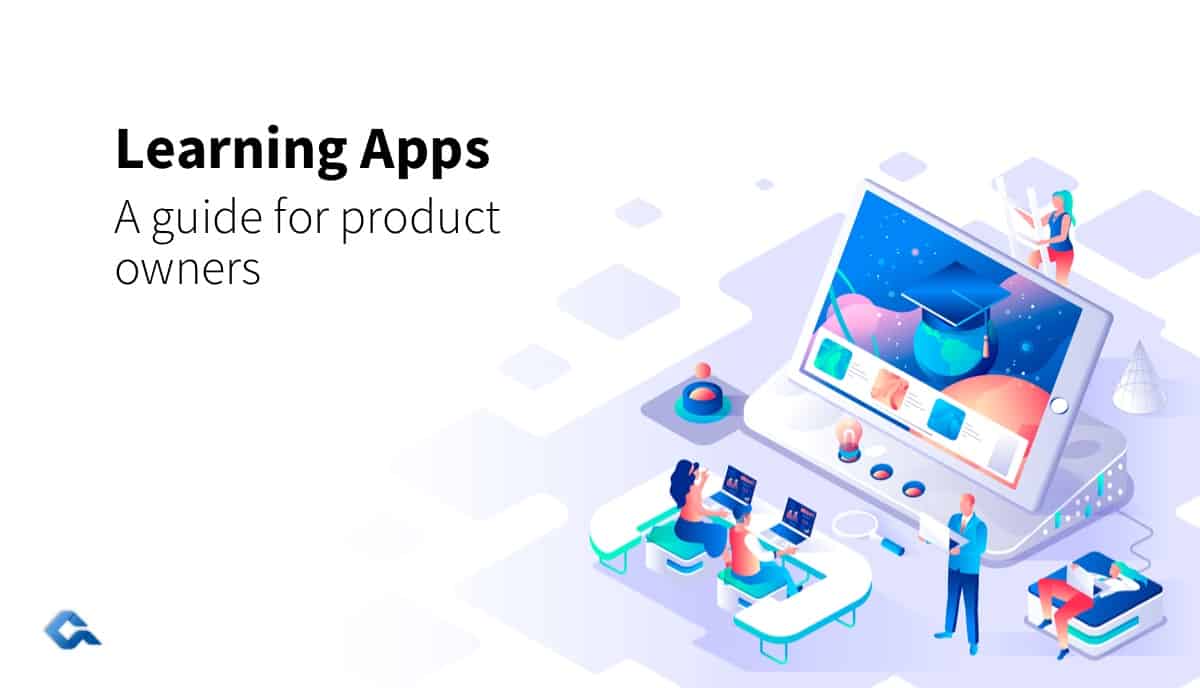With the arrival of cutting-edge technologies, the concept of traditional education has been completely revamped. There is no denying that technology is the driver of the 21st century. Gone are the days when you had to present physically in the classroom to gain knowledge. Today, tons of learning and development app platforms facilitate on-the-move learning of individuals. An ideal educational app makes learning more engaging while providing a rich mix of knowledge to the content consumer.
The market size of educational apps for e learning is growing at a rapid pace. By 2022, the learning and development application market is expected to achieve a whopping 27.9% CAGR. Learning mobile app development will ensure the highest engagement and be on par with any premium institutions providing educational content offline. Therefore, every learning & development application or portal should be designed around specific key components that will guarantee superior learning for students. In this post, we will talk about indispensable components which can help an educational application platform to grow and nurture lives.
- Videos in short form:
Video in short form is currently the most effective form of content for millennials and hence should be targeted. The content on the platform should be easy to comprehend and must fill the skill gap of the end-user. The application should feature content which helps students gain knowledge through articulation and self-reflection in easy to consume bite-sized informational pieces. Through visual aids, the application should well-define the learning objective. It is only then that teaching, and assessment can be done impeccably.
Tik-Tok and Instagram Reels have proven that short form content can help people learn quickly. If you are planning to build a learning app development for android or iOS, consider quick 10-40 second videos for your application as regular content for your end user.
- Engage user using Assessments and Gamification:
Although assignments and tests are age-old techniques, educational applications and platforms still need them. It is quality assignments which can help determine users the competencies they have achieved and what are the loose ends. Offering regular practice tests and mocks can aid students to judge their performance before taking an actual examination. But its important that concepts of Gamification are used to engage the end user. Be it test papers, mocks, practice tests or questionnaires unless you add Gamification concepts like Leaderboards, compete with friends, motivational badges, etc., these won’t reap high results and engagement.
- Live online classes & videos clicks with users:
Though a lot of users prefer to go through content on their own pace, but live classes have their own effect and engagement.
With live chat and quick Q&A with the instructor, the users feel highly connected and engaged with the instructor and the platform. This also gives them a sense of getting higher ROI on their investment on the platform.
Also, traditionally, classes could be of 30-50 people, but with online live classes, this number can grow to 100s and hence you can offer classes at much lower value using the scale through mobile development.
Apart from this, live classes promote the credibility of the instructors and they get a chance to showcase their mastery on the subject on camera. For practical use cases like DIY classes, this is the most effective medium for end users and you will see 2X engagement in live classes.
- Interactive webinars
A webinar promotes wider delivery of content while helping participants to grow their network. When you have a target audience of >100 people, It is highly recommended to adopt the webinar method for content delivery.
Webinars allow connecting with like-minded people from anywhere across the globe, boosts exchange of ideas and ensures deep learning. Unlike face-to-face discussions, webinars enable all attendees to put their best foot forward and contribute to the learning process.E Learning apps and platforms can also provide add-on features such as live recording, remote control and screen sharing. These are the icing on the cake for the participants.
- Offline Availability is a must!
Though live classes and webinars are extremely popular methods of engaging your audience, but it’s also critical to allow your audience to download the content for offline consumption in their own free time.
For longer lessons, user do want to download the content and follow them step by step by referring the content. If the content is online, it’s difficult to scrub through the content and wait for buffer and load times.
- Localization – Language Addition
We have worked with various non-Profit organizations to build applications for Gender Based Violence (GBV) victims and case workers who are helping them. The apps allow users in remote locations to coach themselves on how to deal with GBV situations. Its extremely important to add multiple languages to a learning platform in order to extend the reach of the platform for e.g. the UNICEF – GBV Pocket Guide – app is available in 7 languages and very soon it will have 12+ languages so that it can reach remote users in locations like rural areas of Zimbabwe, Indonesia, Ethiopia, etc.
- Use an Open Source Learning Management System (LMS)
When building a learning solution, you might not be able to think about all the functionalities that a LMS system requires. Hence it is recommended to leverage any of the open source platforms like Moodle, etc. to build upon. The platforms have already thought through the basic concepts of L&D and hence are great starting point.
Though, you would still have to think about how you can integrate concepts of Gamification in the platform as traditional platforms are still maturing in terms of modern age learning concepts.
If you are looking to build a Learning and development mobile application or web platform, please feel free to reach out to our team at Grey Chain a renowned mobile app development company in USA and India. We have worked on 10+ L&D Platforms including working on integrating Learning Management Systems (LMS) like Moodle, Saba Cloud, etc. for various clients globally.

 Get in Touch
Get in Touch

